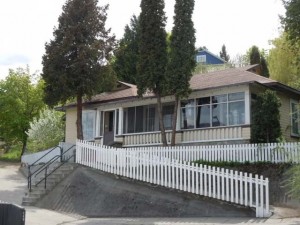Connect the Housing Bubble Dots: There Could be Trouble on CMHC’s Horizon, Globe and Mail
This article appeared on the Globe and Mail on January 23rd, 2011 and was written by Ted Rechtshaffen.
A few months ago I heard leading Canadian investor Eric Sprott speak, and he said a very basic thing that struck a chord. He said that you should not be afraid to connect the dots. The dots are usually in front of you, but people don’t often look beyond the single dot.
Today I am going to show six dots that we can all see. When we connect them, the conclusion is that the Canadian Mortgage and Housing Corp. (CMHC) has a realistic chance of putting the Canadian taxpayer at risk – unless meaningful changes are made.
The key piece of background is that right now, a young couple can put down $20,000 to buy a $400,000 house, or five per cent of the purchase price. Their mortgage will be insured by CMHC (the Canadian government, also known as you and I) in exchange for a fee paid by the young couple.
If that $400,000 house drops in value by 20 per cent, for example, which has happened before in Canada, it will be worth $320,000. But the couple will owe $380,000. Then the odds of them walking away from their house or defaulting on their mortgage become meaningful. Given that this young couple might be in the same position as 50,000 other young couples (about 3 per cent of the Canadian population) at roughly the same time, the odds of a surge in mortgage defaults is very real in Canada.
Here are the dots or facts that we can all see:
Dot #1: “The greatest risk to the domestic economy is household debt,” Bank of Canada Governor Mark Carney said in an interview with the CBC last week, again sounding the alarm bell on excess borrowing.
Dot #2: The ratio of credit market debt to personal disposable income rose to a record high of 150.8 per cent in the third quarter of 2011, Statistics Canada said last week, the third-straight quarter the figure has gone up.
Dot #3: Last week, Bank of Montreal offered a five-year mortgage rate of 2.99 per cent. The lowest rate offered in history. Yes, this rate is available to those interested in putting down 5 per cent.
Dot #4: Fannie Mae and Freddie Mac, two U.S. organizations started in 1968 as a government sponsored enterprise (although they became privately owned and operated by shareholders) – have a mandate to help Americans to become homeowners by increasing liquidity for housing lending, and where appropriate, taking on risk. These two organizations were bailed out by the U.S. government in 2008 after the housing market deflated and it is estimated that their bailout will eventually cost taxpayers as much as $124-billion (U.S.) through 2014. When the housing bubble burst in the U.S., the value of many houses fell by 50 per cent.
Dot #5: In November, the Economist magazine said that Canada is among nine countries in the world where house prices are overvalued by 25 per cent or more. It went on to say that Canada is one of only three countries where “housing looks more overvalued than it was in America at the peak of its bubble.”
Dot #6: CMHC is Canada’s national housing agency. Established as a government-owned corporation in 1946 to address Canada’s post-war housing shortage, the agency has grown into a major national institution. CMHC backed loans of $541-billion (Canadian) as of Sept. 30, 2011. At that time, the total equity of CMHC was $11.5-billion. This is 2.1 per cent in equity against its overall loan exposure. To put the $541-billion in perspective: If we go back to those imaginary 50,000 couples that bought a $400,000 house and put down $20,000, that represents $19-billion of mortgages.


 Downtown living Heritage Style Diamond in the Rough. This home has panoramic views. 10ft ceilings in dining & living rooms. Both dining & living rooms are extremely open & spacious. Nice enclosed front porch & entryway. Updates have been done to the main bathroom, hot water tank, central furnace & plumbing. The comfortable family room could be used as a master suite as it has adjoining bathroom or restore it to the bachelor/1 bedroom suite it once was. This home also comes with a beautiful fully terraced yard (not your usual downtown postage stamp). The gardens & patio make for breathtaking outdoor living. The home has been designed with handicap access as well. This home does have a 1 car garage/shop & loads of additional parking. It does require some love & attention, but for the discerning buyer it is loaded with potential.
Downtown living Heritage Style Diamond in the Rough. This home has panoramic views. 10ft ceilings in dining & living rooms. Both dining & living rooms are extremely open & spacious. Nice enclosed front porch & entryway. Updates have been done to the main bathroom, hot water tank, central furnace & plumbing. The comfortable family room could be used as a master suite as it has adjoining bathroom or restore it to the bachelor/1 bedroom suite it once was. This home also comes with a beautiful fully terraced yard (not your usual downtown postage stamp). The gardens & patio make for breathtaking outdoor living. The home has been designed with handicap access as well. This home does have a 1 car garage/shop & loads of additional parking. It does require some love & attention, but for the discerning buyer it is loaded with potential.